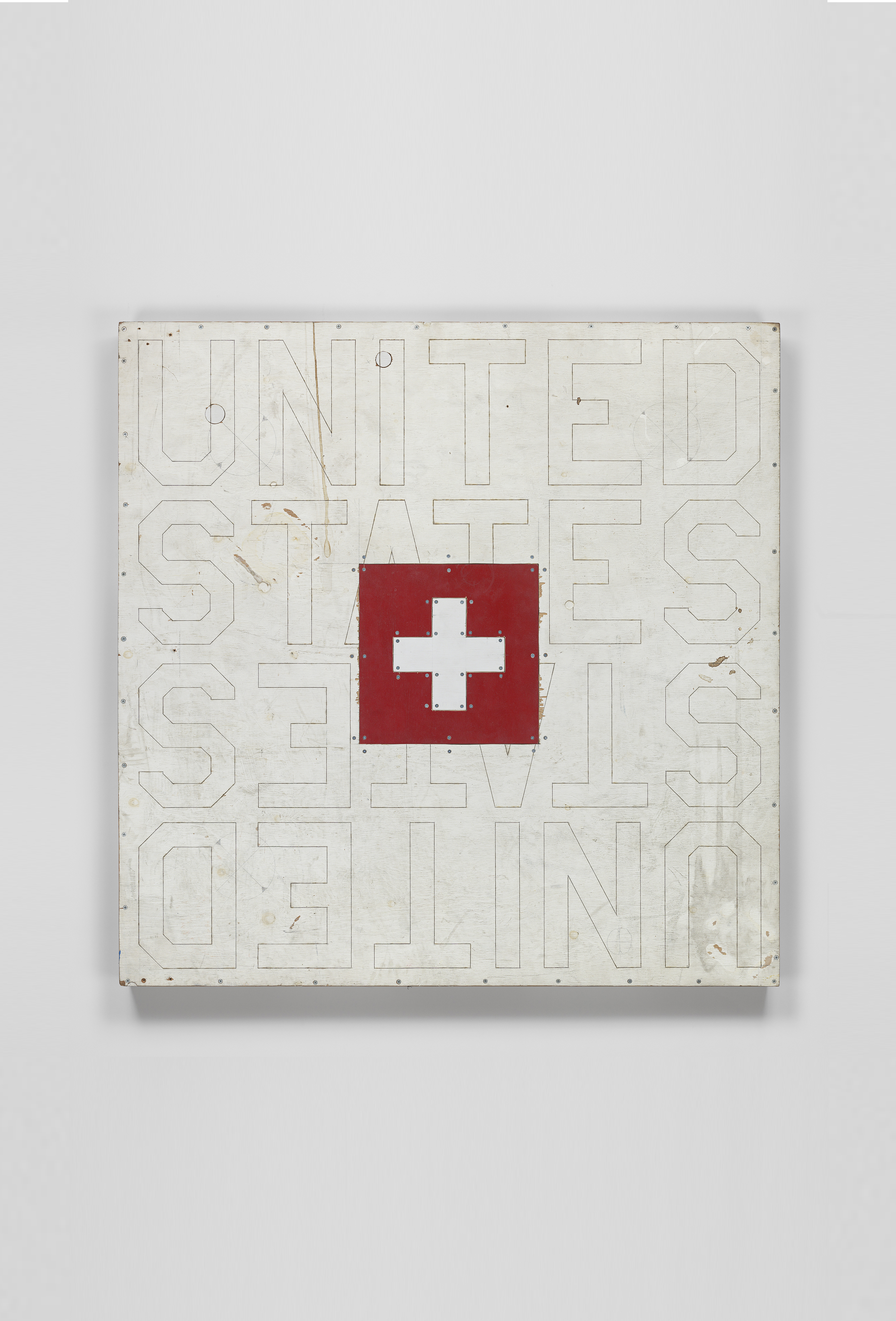HEIDI AND THE PACK
December 28, 2018 - February 3, 2019
Switzerland began to appear as a reference in Tom Sachs’s art in the early 1990s. In what he today refers to as a “Surrealist-punk gesture” and “act of vandalism,” the young artist deposited a pile of vinyl stickers emblazoned with the provocative phrase “Nuke the Swiss” on the reception desk of Deitch Projects New York in the spring of 1996. Sachs’s free art found its dark humor in the suggestion that anyone would willfully bomb the place and the people in possession of world’s wealth.
Two decades later, Sachs’s exhibition at Vito Schnabel takes its title from the artist’s latest sculptural invention The Pack (2018), which itself references Joseph Beuys’s seminal 1969 installation of the same name. Beuys’s work consisted of a Volkswagen van disgorging twenty-four wooden sleds from open rear doors. Each sled was equipped with a felt blanket, a flashlight, and a lump of animal fat — objects providing protection, navigation, and sustenance in an emergency to ensure primitive survival. In Sachs’s sly homage, the materials of the German Beuys morph into a reference to the Pontifical Swiss Guard. Three fully functioning electric motorcycles, each named for a city in the African states (ie. Lagos, Mogadishu, Kinshasa), are outfitted with Swiss blankets, flashlights, and such tools of ancient and modern warfare as a machete and a BB gun. The artist has equipped each of the three vehicles with a postmodern survival kit including snacks. When activated in ritualized joy ride, this moto-pack becomes a symbol one of the world’s oldest intact military units—the Swiss guards were originally mercenaries instated by Pope Julius II in 1506 for their reputation as loyal and invincible soldiers—while evoking the chaotic energy Beuys promulgated as essential to social progress.
Another icon of Swiss heritage serves as inspiration for the sculpture Heidi (2018), which references the beloved 1881 novel by Johanna Spyri, chronicling the life of a young orphaned girl raised by her grandfather in the Swiss Alps. Here, however, the wholesome 19th century folklore heroine is refashioned as a symbol of sensuousness and arousal, ubiquitous 21st century commodities. Art historically, the milkmaid and the open jug from which she pours are well-established stand-ins for female anatomy, fertility, and eroticism. Sachs makes these references explicit, transforming the milkmaid into a faceless coffee-making robot that expels caffeine from her exposed spout. The pleasures and absurdities of ritualized consumption—from the Zen tea master and Japanese traditions of chanoyu, to self-crafted rituals of our morning cup of coffee or our mass consumption of the barista’s trade—are elements in Sachs’s ongoing study of rituals and social patterns.
In two new paintings, Switzerland (2018) and Maximum Luminosity (2018), Sachs employs the landscape of Africa to draw our attention to issues of geopolitical and economic consequence, raising barbed questions about identity and belonging. Demarcation lines that divide Africa into 54 independent countries do not reflect tribal regions or cultural concentrations, but were created by European colonizers as means to capitalize upon Africa’s natural resources. In Switzerland, the artist renames the 26 cantons of the Swiss Confederation after Africa’s sovereign states, proposing a redistribution of wealth. What if Sierra Leone, where more than half the population lives below the poverty line, was freed from economic distress via the advantage of the legendary infrastructure of Geneva, Europe’s trade and financial center? What if Burundi, one of the world’s poorest nations now struggling to emerge from a devastating twelve-year, ethnic–based civil war, had the resources of Zug, a sleepy Swiss town that has become its nation’s wealthiest canton?
For Maximum Luminosity, Sachs appropriates Uganda’s coat of arms to create commentary upon the fate of a land rich in natural resources but subjected to the scourge of colonizing mismanagement and callousness. Crossed spears flank the logo of CERN, the European Organization for Nuclear Research and maker of the Large Hadron Collider (LHC), the world’s largest and most powerful particle accelerator. On either side of the shield, a Ugandan Kob (antelope) and a Crested Crane are portrayed. The animals stand upon a green mound, evoking the fertile land and lush vegetation through which the Nile River runs, while coffee and cotton plants represent Uganda’s natural resources and primary export crops. Sachs offers up a nearly forgotten sensuality—the rich relationship that once existed between a nation’s environment and people, but which has since been exploited by foreign powers. Here, the phenomenon of maximum luminosity—which results when the opposing powers of radiation outward and gravitational force inward, create a black hole—has become a stand-in for the dangerous limits societal impulses have reached.
References to other alternative worlds created previously by Sachs find echoes in The Pack. SA111 (2018), for example, harkens to Sachs’s flight and space works as it pays tribute to the 229 people killed in 1998 when a Swiss Air jet crashed in Nova Scotia, en route from New York to Geneva. The devastating loss of life (and cargo including approximately 110 pounds of cash and gold, 14 pounds of watches and jewelry, 4 pounds of diamonds, and Picasso’s 1963 painting Le Peintre) was caused by technological failure. SA111 reminds us of the perils that even the most advanced nations face.
Several works in the exhibition also extend to Sachs’s other immersive worlds. Among these are the 2018 painting Moon, inspired by man’s lunar odyssey. Meticulously handcrafted to reveal the qualities of its making, this work resonates as an object of quiet contemplation, devotion, and conquest, tracing the cycles of how we measure our days. Wall Drawing Number One (2017) celebrates the importance of ritualized activity in the artist’s ever-evolving practice, while commemorating the conceptual influence of an American titan who was his close friend. Sachs curated an exhibition of LeWitt’s work at Vito Schnabel Gallery earlier in 2018.
<
>












